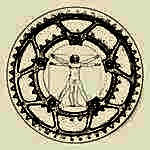 |
 |
Synthesis of Man and Machine
By : Jim Pinto, Too often, automation systems are not designed with consideration of people and machines working in harmony. Enhanced productivity comes by optimizing the human element. People provide the peripheral vision; they fill in the gaps and create the broader context in ways that machines cannot. This partnership is the man/machine framework.
December 2012
|
 The anticipated recovery has not brought the unemployment rate down significantly in the United States.
The anticipated recovery has not brought the unemployment rate down significantly in the United States.
Many companies are profitable, but are hoarding cash because of uncertainties related to Europe and the economy. Confronted with unprecedented global competition, some manufacturers are driving to improve productivity through increased spending on automation equipment. Regardless of how the economy fares in the near-term, it will be difficult for employment in the manufacturing and process industries to attain previous levels because automated production equipment today is smaller and cheaper, and requires fewer operators with better education and advanced skills. Technology inevitably destroys some jobs even as it ultimately creates new ones. With some 20 million Americans still jobless or underemployed, many worry that fundamentals have changed. Erik Brynjolfsson and Andrew McAfee, co-authors of the new book, Race Against the Machine, think that the economy is in the early stages of a restructuring that is hollowing out the labor market and exacerbating inequality. It is tempting to automate humans out of manufacturing systems. But that is not the solution for today's complex industrial processes or the markets they serve. Maximizing productivity comes through an optimized balance of humans and machines. While automation typically provides consistent performance, it lacks judgment, adaptability and flexibility under changing conditions. Humans provide the "feel" that makes them the most important element of production and control systems. System performance is maximized if the strengths of both human and machine components are taken into account. Too often, automation systems are not designed with consideration of people and machines working in harmony. Analytical functions and process automation are seen as separate structures, not as extensions of the thinking and actions of the people involved in the system. For systems to succeed, they must be consciously designed to enhance the capabilities and thinking of people, not to replace them. Today, the volume of data and the rate at which it is created has outstripped the analytical capacity of people. Applications are getting increasingly more complex so that machine learning is demanded to sort out myriad opportunities to take action and make improvements. Systems based on machine-learning filter out the noise, handling the sheer data volume and complexity, and turning the flood of data into signals that yield productivity results. Big data then becomes consumable small data that suggests actions that people can understand and use. Optimize humansEnhanced productivity comes by optimizing the human element. People provide the peripheral vision; they fill in the gaps and create the broader context in ways that machines cannot. This partnership is the man/machine framework.Optimized processes correctly separate tasks between humans and machines. Machines should offer "recommended actions" for humans to choose from. The results of actions taken could then be fed back into the machine learning system for continuous optimization. This process should start with the control engineer, who is responsible for enlarging the scale of automation and playing a role in adapting it to achieve optimized productivity. Automation systems must "learn" continuously from operator experiences, normal and abnormal, minimizing dependence on experienced human operators. Improved effectiveness comes not just from training operators to use increasingly more complex systems, but also from developing systems that adapt effectively to maximize throughput with optimized operator involvement. The system must adapt to the needs of available operators, reducing the training requirements for new operators. Continuously improving automation productivity depends upon the synthesis of man and machine. 
|
 Pinto's Points How to win in the Automation Business Go shopping - books, electronics, CD/DVD Selected advertising coming here. Contact Jim Pinto for rates. |
Return to Index of all JimPinto Writings

 Return to JimPinto.com HomePage
Return to JimPinto.com HomePage
If you have ideas or suggestions to improve this site, contact: webmaster@jimpinto.com
Copyright 2006 : Jim Pinto, San Diego, CA, USA
